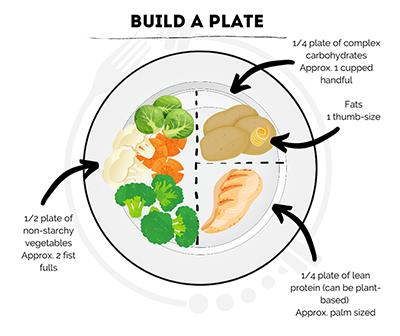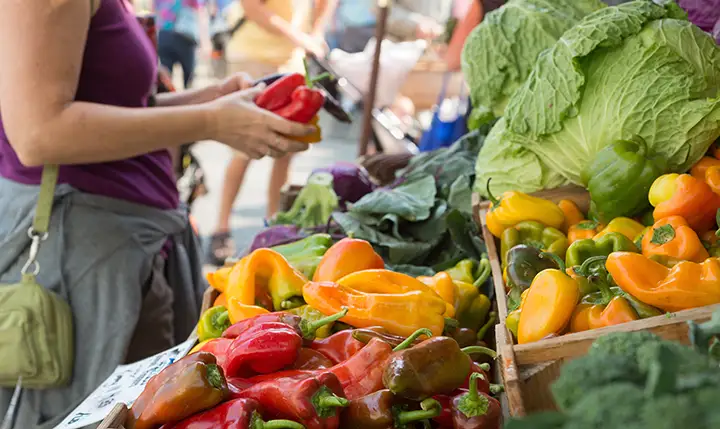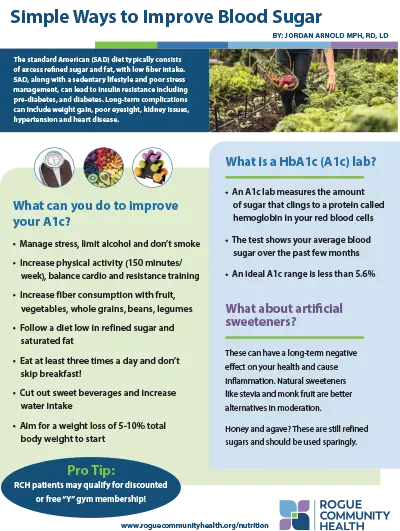Don't Be SAD
The standard American (SAD) diet typically consists of excess refined sugar and fat, with low fiber intake. SAD, along with a sedentary lifestyle and poor stress management, can lead to insulin resistance, including pre-diabetes and diabetes. Weight gain, poor eyesight, kidney issues, hypertension, and heart disease are all possible long-term complications.
What are my A1c Levels
An important step in managing your blood sugar is understanding what the HbA1c (A1c) lab test is. This test measures the amount of sugar attached to the hemoglobin in your red blood cells, providing an average blood sugar level over the past few months. An ideal A1c level is below 5.6%.
What About Sugar Substitutes?
It's tempting to replace sugar with artificial sweeteners, but they can negatively affect your health in the long term, leading to inflammation. Natural alternatives like stevia, monk fruit, and allulose are better alternatives in moderation. Honey and agave? These are still refined sugars and should be used sparingly.
How Can You Improve Your A1c?
Improving your A1c and overall health doesn't require drastic changes overnight. Instead, consider these manageable steps:
- Manage stress, limit alcohol consumption, and avoid smoking.
- Aim for at least 150 minutes of physical activity per week, including a balance of cardio and resistance training.
- Increase your intake of fiber-rich foods like fruits, vegetables, whole grains, beans, and legumes.
- Follow a diet low in refined sugars and saturated fats.
- Eat at least three times a day, and never skip breakfast!
- Replace sweet beverages with water to increase hydration.
- Work towards a modest weight loss of 5-10% of your total body weight as a starting point.
Pro-tIP
A Special Opportunity for RCH Patients
RCH patients might be eligible for discounted or even free gym memberships at the "Y"! Call your local YMCA today to learn more!
The Balanced Plate Method for Healthier Meals
A balanced diet is key to managing blood sugar levels. Here's how you can structure your meals.

- Contains a lot of fiber and phytonutrients, which help stabilize blood sugar
- Get creative with your produce: try smoothies, soups, baked, dried, or even frozen
- Protein foods help to stabilize blood sugar
- Lean = low fat. Better choices include plant protein (beans, legumes, soy), fish, poultry, and non-fat dairy
- A protein serving is typically 4oz
- Whole grains, including oats, barley, brown rice, sprouted bread, popcorn, and quinoa
- Other choices include beans, seeds, potatoes and corn
- Essential fats include Omega 3s and 6s
- The best choices are foods high in Omega 3s like seeds, nuts, avocado, tofu, and fatty fish
Pro-tIP
Consistency is Key
Since the A1c measures your average blood sugar over several months, maintaining a consistent approach to your health is crucial. Start with small, manageable changes and build from there.
Balanced Snack Ideas
- Hummus, wheat pita and/or raw veggies
- Apple and peanut or almond butter
- Edamame (try with sesame or garlic)
- Wholegrain toast with avocado
- Homemade trail mix with unsalted nuts and dried fruit (or dark chocolate)
- Low-fat Greek yogurt with fruit
- Hardboiled egg and whole wheat crackers
- Homemade energy ball
- Popcorn with pepper or nutritional yeast
- Smoothie with various fruit, vegetables, plant-milk and protein
- Turkey or humus and vegetable roll-up on whole wheat tortilla (or ½ sandwich)
- Whole food snack bars (like Rx bars)




